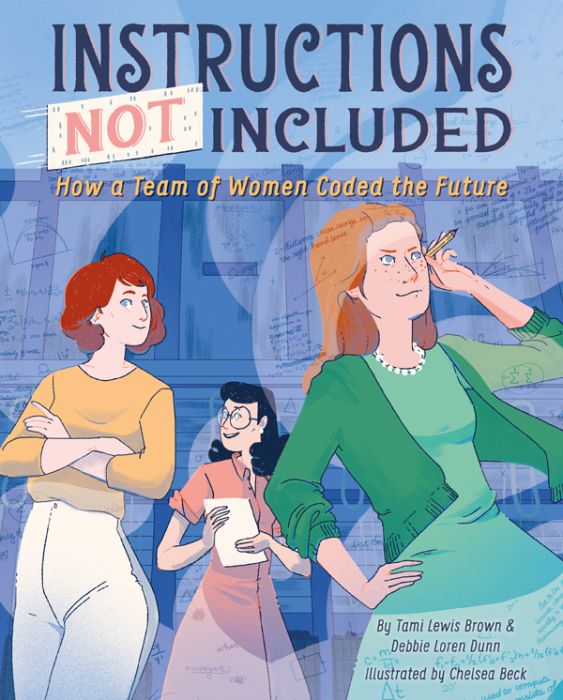
Instructions Not Included: How a Team of Women Coded the Future
By Tami Lewis Brown, Debbie Loren Dunn
Illustrators
Illustrated by Chelsea Beck
Edition
By Tami Lewis Brown, Debbie Loren Dunn
Hardcover edition
Publisher Disney Book Group Imprint Disney-Hyperion ISBN9781368011051
Awards and Honors NSTA Best STEM Books - 2020Instructions Not Included: How a Team of Women Coded the Future
 10.75
10.75
Out of stock
SKU
9781368011051J
Click. Whir. Buzz.
Not so long ago, math problems had to be solved with pencil and paper, mail delivered by postman, and files were stored in paper folders and metal cabinets. But three women, Betty Snyder, Jean Jennings, and Kay McNulty knew there could be a better way. During World War II, people hoped ENIAC (Electronic Numerical Integrator and Computer), one of the earliest computers, could help with the war effort. With little guidance, no instructions, and barely any access to the machine itself, Betty, Jean, and Kay used mathematics, electrical engineering, logic, and common sense to command a computer as large as a room and create the modern world.
The machine was like Betty, requiring outside-the-box thinking, like Jean, persistent and consistent, and like Kay, no mistakes, every answer perfect. Today computers are all around us, performing every conceivable task, thanks, in large part, to Betty, Jean, and Kay’s pioneering work. Instructions Not Included is their story.
Authors’ note, with photographs. Resources. Full-color illustrations.
Not so long ago, math problems had to be solved with pencil and paper, mail delivered by postman, and files were stored in paper folders and metal cabinets. But three women, Betty Snyder, Jean Jennings, and Kay McNulty knew there could be a better way. During World War II, people hoped ENIAC (Electronic Numerical Integrator and Computer), one of the earliest computers, could help with the war effort. With little guidance, no instructions, and barely any access to the machine itself, Betty, Jean, and Kay used mathematics, electrical engineering, logic, and common sense to command a computer as large as a room and create the modern world.
The machine was like Betty, requiring outside-the-box thinking, like Jean, persistent and consistent, and like Kay, no mistakes, every answer perfect. Today computers are all around us, performing every conceivable task, thanks, in large part, to Betty, Jean, and Kay’s pioneering work. Instructions Not Included is their story.
Authors’ note, with photographs. Resources. Full-color illustrations.
|
Standard MARC Records Cover Art |
Science Nonfiction Elementary Plus (Grades 2-6)
Science Nonfiction Elementary Plus
Science Nonfiction Elementary Plus (Grades 2-6)
For Grades 2-6
Explore everything from the galaxies to your own backyard in these accurate and up-to-date nonfiction titles. Young scientists will experience fascination monthly with the 14 books in this category.
14 books per Year
$0.00 per Year
Interests
Biographies, Graphic Novels, Nonfiction, Reluctant Readers, Science/STEAM





